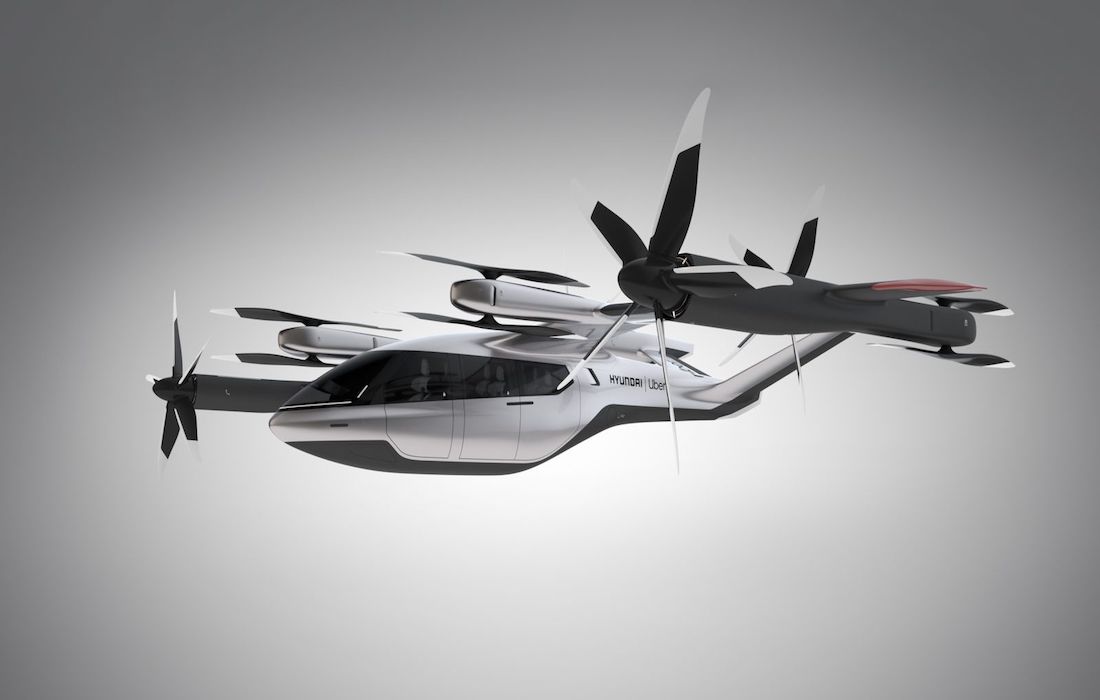A month before, Hyundai released a teaser of flying car, a concept it was bringing to the Consumer Electronics Show in Las Vegas. The flying car prototype will now showcase at CES this week. Not only will Hyundai produce these electric vertical takeoffs and landing (e-VTOL) aircraft on large scale, but it will also put them to work for Uber’s promised air taxi service.
If you remember, Uber had announced its aerial ambitions in 2016 with a white paper that name the project “Uber Elevate”. The ride-hailing corporation has announced it requires to conduct its own test efforts in 2020 and plans to launch some version of an air taxi service in 2023, starting in Dallas, Texas, and Los Angeles, California. Recently, Uber also announced that it will offer helicopter taxi service in New York from lower Manhattan to John F. Kennedy International Airport.
Now Hyundai is along for the ride (flight?). It’s noteworthy because Hyundai is, in essence, lending its manufacturing credibility to Uber’s ambitious (if dubious) plan to launch an urban air taxi system by the mid-2020s. Based on the features, Hyundai’s PAV (Personal Air Vehicle) won’t be some Sonata in the sky. With two tilt-rotors on the tail, and 10 other rotors distributed around the egg-shaped cabin, the aircraft is designed to take off vertically, the transition to wing-borne lift in cruise, and then back to vertical flight to land.

Hyundai lending manufacturing credibility to Uber’s plan
The five-person vehicle will have a cruising speed of 180 mph (290 km/h) and a cruising altitude of around 1,000–2,000 feet (300–600 meters) above ground. Hyundai says by using smaller, electric-powered rotors, the vehicle will produce less noise than a combustion engine helicopter, which is crucial for cities worried about noise pollution. During peak hours, it will require only about five to seven minutes for recharging. Hyundai says the flying car will have a range of 60 miles between charging.
It all seems great and fantastically futuristic on paper, but Hyundai is yet to test flying cars, piloted or otherwise, nor has it said how much all this will cost. There have been a handful of small-scale test flights of e-VTOL aircraft around the world, but none are currently in commercial operation. The technology is still in its very early days, and Uber and Hyundai, as well as a variety of other players in the field, face enormous regulatory and technical challenges in getting their respective air taxi plans off the ground.
Hyundai, still, is the first global automaker in the world to join forces with Uber for air taxi services. The automaker will produce and deploy the electric aircraft, while Uber will provide airspace support, ground operations, and, of course, the app through which customers can book flights.
Though Uber said it’s looking for partners that can meet its technical specifications, it had released images of its own concept aircraft last year ago, — electric-powered, minimal noise, and vertical takeoff and landing capabilities — as well as a company that can scale production to build tens of thousands of vehicles to meet the demand of on-demand service. Uber has struck similar arrangements with seven other aerospace companies: Joby, Jaunt, Embraer, Pipistrel, Karem Aircraft, Aurora Flight Sciences, and Bell.









